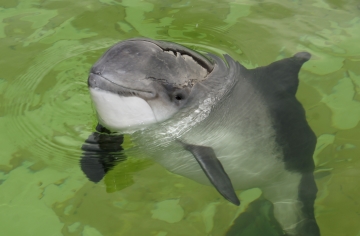740424_Porpoise Pits_360 px width.jpg

Harbor porpoise hunting activity might be the reason for thousands of pits in the North Sea. Credit: Ecomare/Sytske Dijksen, CC BY-SA 4.0
Some strange holes pockmark the bottom of the North Sea. They can be anywhere from a few feet to hundreds of feet wide. But all of them are about four inches deep. That doesn’t match the kinds of pits produced by geological processes or ocean currents. Instead, a recent study says they were created on porpoise.
Scientists have known about the pits for years. The most common explanation said they were produced by blobs of methane bubbling up through the sediments. But such pits are cone shaped. And wider methane pits are also deeper.
To learn more about these odd depressions, researchers studied the floor of the North Sea off the coast of Germany. Using sophisticated sonar, they mapped the sea floor in great detail. They saw more than 40,000 of the pits. And they found that, over a six-month-period, the pits changed. Some of them got bigger, others merged, and new ones took shape.
The scientists also studied ocean currents and marine life in the region. And they found that it’s part of the habitat of the harbor porpoise.
The team suggested that the porpoises scour the shallow pits while they’re hunting for sand eels, which can burrow a few inches into the sediments. The porpoises are known to use their snouts to dig into the soft sand and mud. That poking around may scare the critters out of their hiding places, making them easy prey. And stirring up one sand eel might make others try to get away as well—escaping from pits dug by hungry porpoises.

